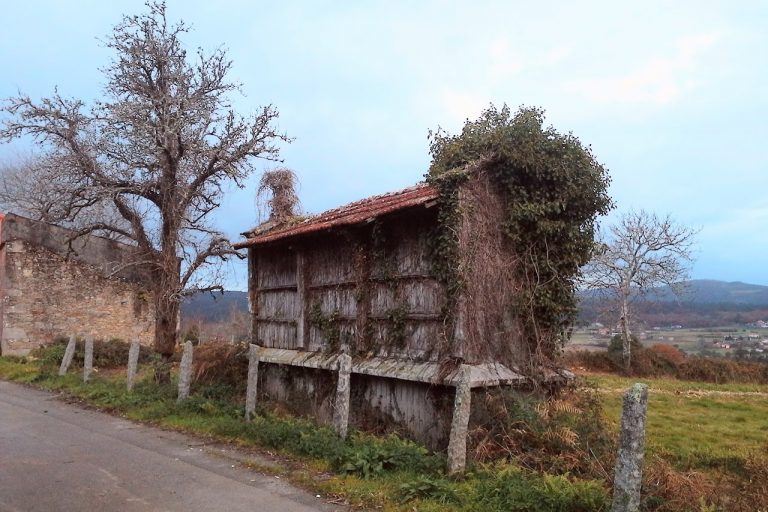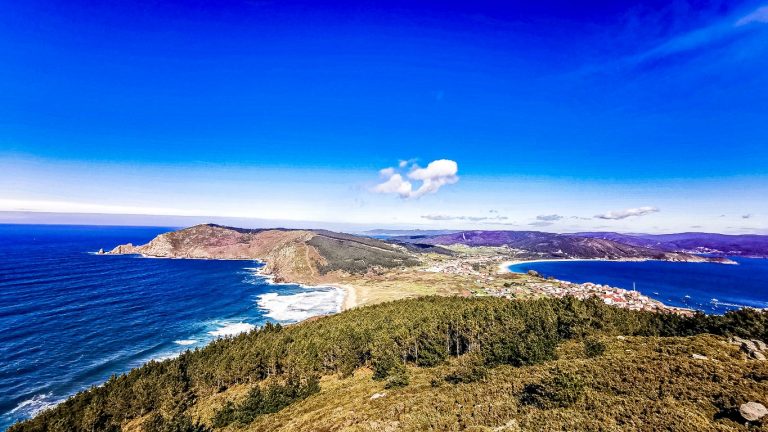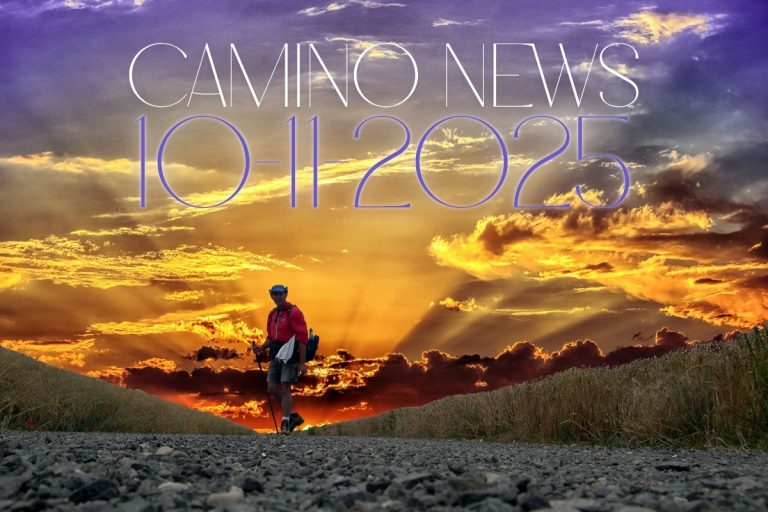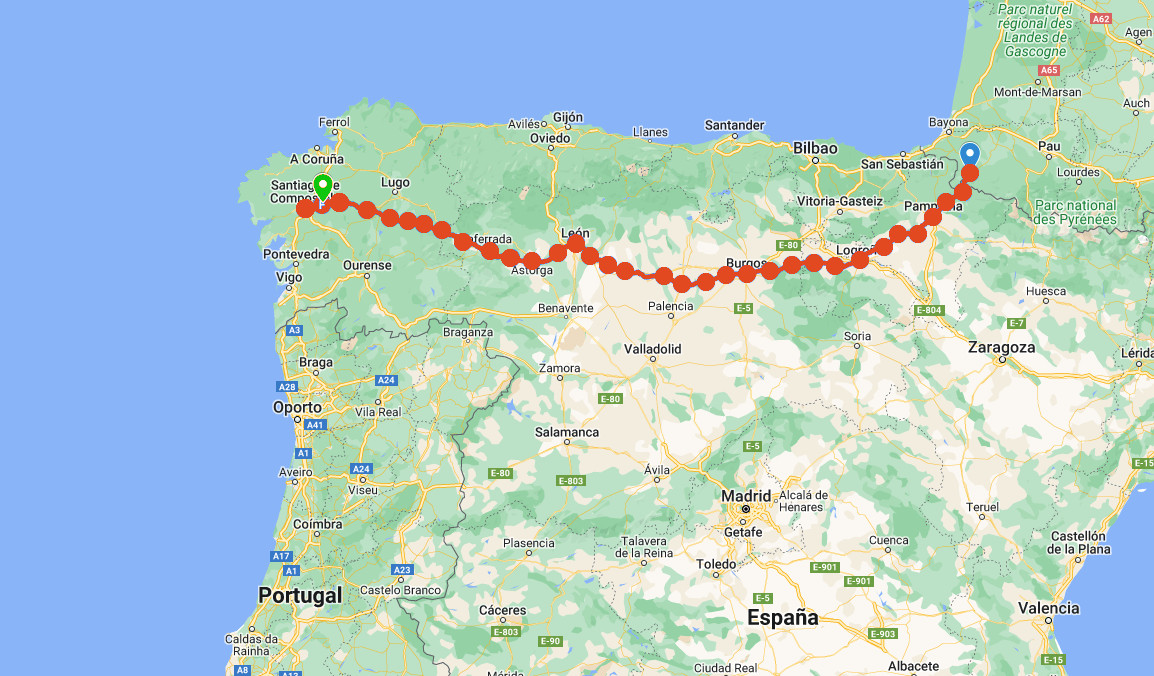
Introduction – The First Encounter with This Way
Early morning in Saint-Jean-Pied-de-Port. A delicate mist lies over the River Nive, the cobblestones glisten with dew, and from the cafés drifts the scent of freshly baked baguette and strong coffee. Pilgrims from all over the world arrange their backpacks, lace their boots, and cast one last glance at the red shutters of the Basque houses.
The Camino Francés is far more than just a hiking trail – it is a 780-kilometre-long story, unfolding over 31 stages through four autonomous regions of Spain and a small section of France. It links the majestic Pyrenees, the vineyards of La Rioja, the endless expanse of the Meseta, and the gentle green valleys of Galicia into a journey that challenges body, mind, and heart alike.
Its great distinction lies in its variety: those who walk this way pass through five cultures, several language regions, and a wealth of landscapes – encountering stories that have been gathering here for over a thousand years.
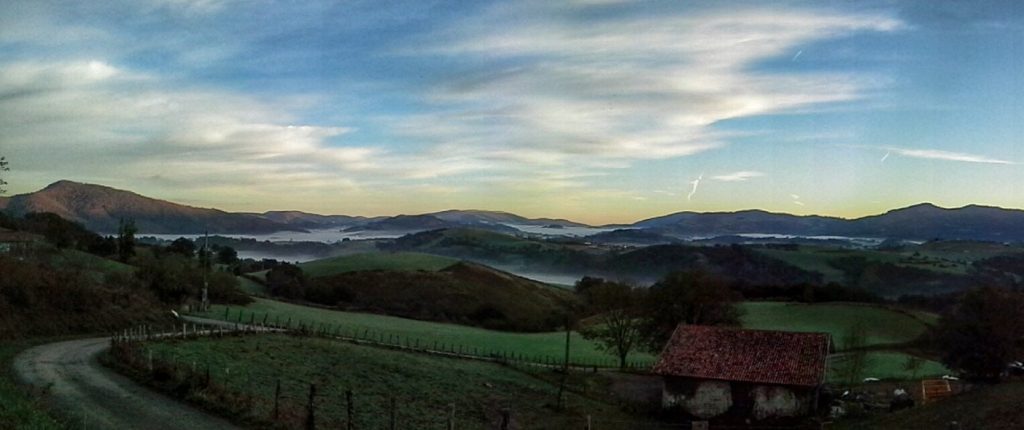
Historical Background & Cultural Significance
The Camino Francés took shape in the 9th century when the alleged relics of the Apostle James were discovered in Santiago de Compostela. It soon developed into the main axis of medieval pilgrimage, supported by kings, monasteries, and trading towns.
Along the route, a dense network of hostels, bridges, churches, and hospitals emerged – many of which still shape the landscape today. Towns such as Puente la Reina, Burgos, León, or Santiago itself stand as stone witnesses to a time when spirituality, trade, and culture were inseparably intertwined.
Among its living legends are the tale of the “singing rooster” in Santo Domingo de la Calzada and the “Eucharistic Miracle” of O Cebreiro – both deeply rooted in the pilgrim tradition.
Facts:
- First mentioned: 9th century
- Key historic sites: Roncesvalles, Puente la Reina, Burgos, León, O Cebreiro, Santiago de Compostela
- Important legends: Singing rooster, Cruz de Ferro, Eucharistic Miracle
- Notable buildings: Cathedrals of Burgos, León, and Santiago; Bridge of Puente la Reina; Templar castle in Ponferrada

Geographical & Landscape Features
French Basque Country & Navarre:
From the green valley of the River Nive, pilgrims climb into the Pyrenees. The Napoleon Route crosses grassy ridges, while the Valcarlos Route follows the rivers through the valley. Beyond Roncesvalles, forests, fields, and gentle hills open up, crossed by Romanesque bridges and dotted with small Basque and Navarrese villages.
La Rioja:
Beyond Puente la Reina, the landscape changes. Expansive vineyards dominate, golden and red in autumn, soft green in spring. Towns like Logroño invite you to linger over pintxos and a glass of Rioja wine.
Meseta (Castile and León):
From Burgos onwards begins the great openness. Flat, open land, swept by wind, with horizons that seem to have no end. This is a place for silence and inner reflection.
Montes de León & Bierzo:
Beyond Astorga, the route climbs to the Cruz de Ferro. Then it descends into the fertile Bierzo region, with its vineyards, chestnut groves, and historic towns like Ponferrada and Villafranca.
Galicia:
Crossing O Cebreiro, you enter a world of green hills, eucalyptus forests, and rain-soaked paths. The air is moist, the atmosphere gentle – and Santiago draws closer with every step.
Facts:
- Elevation profile: Several major climbs (Pyrenees, Montes de León, O Cebreiro)
- Landscape types: High mountains, wine-growing regions, high plateau, uplands, Atlantic hill country
- Climate zones: Atlantic, continental, mountain climate
- Geological features: Limestone in the Pyrenees, slate in León, granite in Galicia
Length, Duration & Level of Difficulty
The Camino Francés measures around 780 kilometres, divided into 31 stages. Daily distances range between 18 and 30 kilometres. On average, pilgrims take 30 to 35 days to complete the full route.
The most physically demanding sections are the climb through the Pyrenees, the crossing of the Montes de León, and the ascent to O Cebreiro. The Meseta is physically easier but demands mental endurance.
Facts:
- Total length: 780 km
- Duration: 30–35 days
- Stages: 31
- Total elevation gain: approx. 15,000 m cumulative
- Difficulty level: Medium to demanding
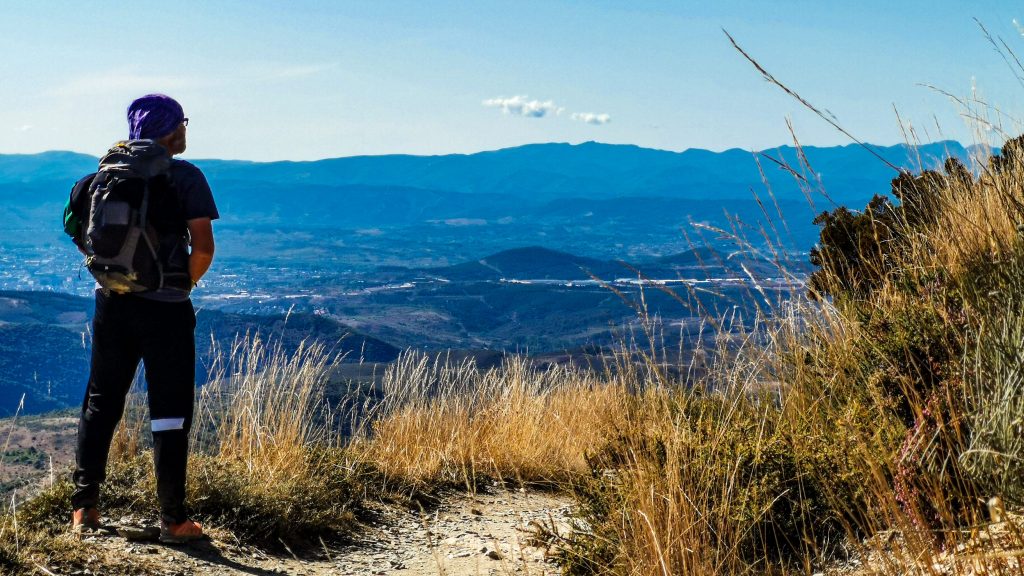
Infrastructure for Pilgrims
The Camino Francés offers the best infrastructure of all the Camino routes. Every five to ten kilometres you will find hostels or guesthouses, with hotels and restaurants of all price ranges in towns.
In summer, reservations are advisable; in winter, some hostels close. Water sources are generally available, but less frequent in the Meseta.
Facts:
- Types of accommodation: Public hostels, private hostels, hotels, donativos
- Water sources: Frequent, except in the Meseta
- Seasonal availability: Limited in winter
- Reservation requirement: Usually no, except in high season
Notable Sights & Highlights
- Historic towns: Pamplona, Burgos, León, Santiago
- Buildings: Cathedrals of Burgos, León, Santiago; Puente la Reina; Templar castle in Ponferrada
- Nature: Pyrenees, Montes de León, eucalyptus forests of Galicia
- Cuisine: Pintxos (Navarre), Rioja wine, Botillo (Bierzo), Pulpo a la Gallega (Galicia)
- Spiritual sites: Cruz de Ferro, O Cebreiro, Santiago Cathedral
Best Travel Time & Climate Recommendations
- Spring: Mild temperatures, blooming landscapes
- Summer: Long days, heat in the Meseta, full hostels
- Autumn: Golden vineyards, clear air
- Winter: Solitude, snow risk in Pyrenees & O Cebreiro
Who Is This Camino Suitable For?
For pilgrims who value variety – in landscapes, cultures, and encounters. Accessible for well-prepared beginners, challenging enough for experienced walkers. In principle, suitable for all age groups as long as you know your limits.
Recommendations & Practical Tips
Like every Camino route, the Camino Francés has its own seasonal demands. In high season (June to late September), flexibility is key. Even those who plan far ahead often find that some hostels are already booked the day before.
Two main reasons: many want to enjoy their perhaps once-in-a-lifetime Camino without stress and book in advance. Others reserve multiple beds in different places but use only one – frustrating hostel owners. Here, “asynchronous walking” can help: instead of stopping in the main stage town, spend the night in a smaller village in between.
The closer you get to the final 100 kilometres (e.g., Tui, Sarria), the more valuable this flexibility becomes. For everything else, the timeless advice of Dante Alighieri applies: “Pilgrim, follow your own path and let people talk.”
Summary:
- Travel light, pack good rain gear, break in your shoes well
- Start early, especially in summer
- Pay in cash in small villages – ATMs are scarce, and card payments often have a €10 minimum. In towns, some cafés and restaurants now charge €0.50 to visitors who only use the toilet – partly due to rising water and energy costs.
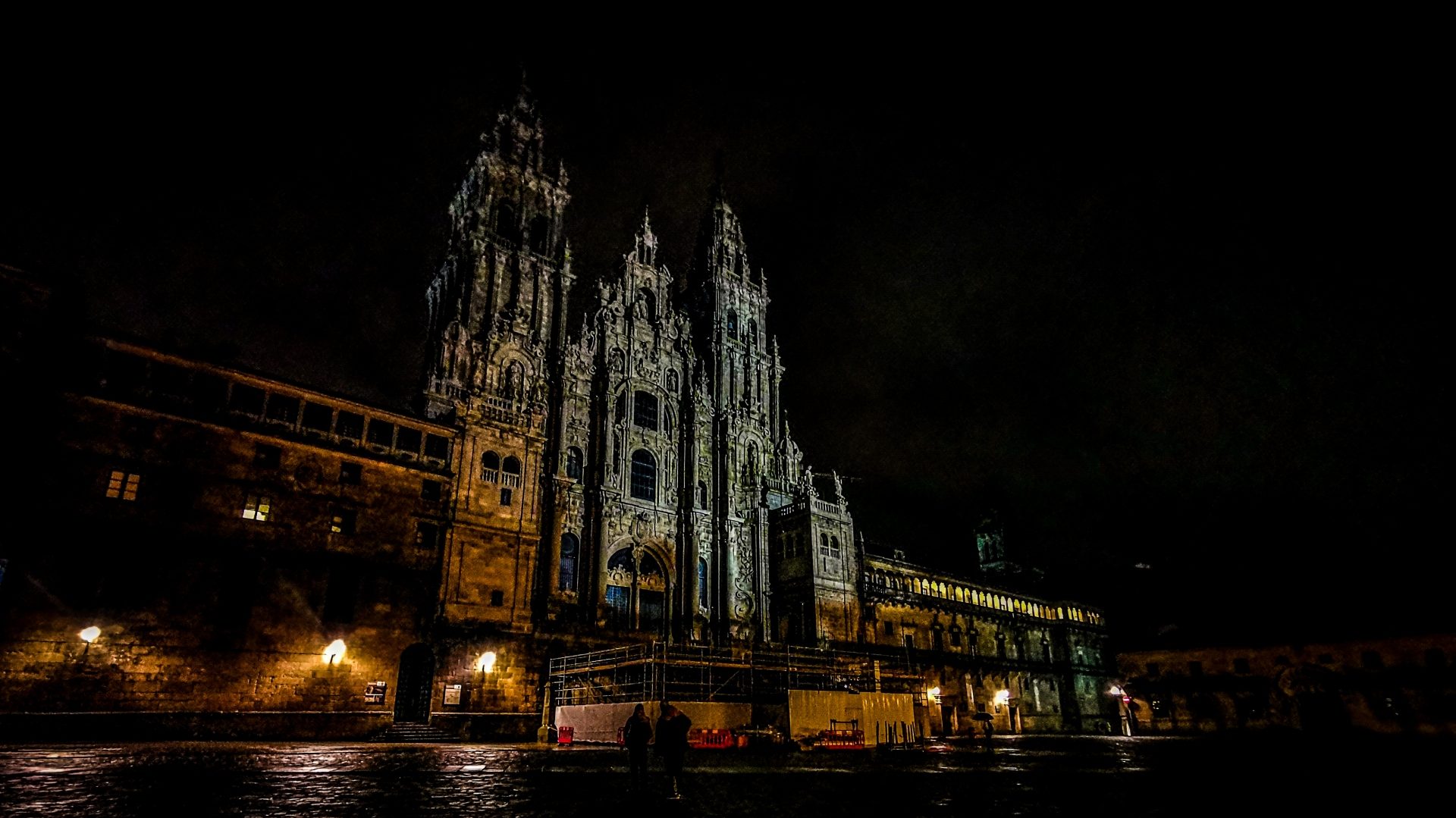
Reflection Section per Region
- Navarre: “What would you entrust to the wind at Alto del Perdón?”
- La Rioja: “What story would you tell the vines between Viana and Logroño?”
- Meseta: “What thoughts would you let drift in the vastness between Burgos and León?”
- Galicia: “What promise would you renew in the rain of O Cebreiro?”
Did you enjoy this article but feel important information is missing?
Write to me via the contact form – in German, English, Spanish, Galician, or French. Your suggestion will be reviewed and added if appropriate.
“Camino of the Stars” for the Camino Francés:
Saint-Jean-Pied-de-Port, |Napoleon Route| – Honto, Orrison, |Valcarlos Route| – Arnéguy, Valcarlos, Roncesvalles, Burguete, Espinal, Zubiri, Urdaniz, Zubiri-Ilarratz, Larrasoaña, Zurirain, Zabaldica, Trinidad de Arre, Huarte, Villava, Pamplona, Cizur Minor, Zariquiegui, Uterga, Muruzabal, Obanos, Puente la Reina [here the Camino Aragonés from Somport ends and merges with the Camino Francés], Mañeru, Cirauqui, Lorca, Villatuerta, Estella [here the Camino de Santiago Baztanés ends and merges with the Camino Francés], Ayegui, Azqueta, Villamayor de Monjardin, Los Arcos, Sansol, Torres del Rio, Viana, Logroño [here the Camino Catalán from Barcelona ends and merges with the Camino Francés], Navarrete, Sotes, Ventosa, Najera, Azofra, Cirueña, Santo Domingo de la Calzada, Grañon, Redecilla del Camino, Castildelgado, Viloria de Rioja, Villamayor del Rio, Belorado, Tosantos, Villambistia, Espinosa del Camino, Villafranca Montes de Oca, San Juan de Ortega, Agés, Atapuerca, Olmos de Atapuerca, Cardañuela – Riopico, Burgos [here the Camino del Castellano-Aragonés ends], Tardajos, Rabe de las Calzadas, Hornillos del Camino, Sambol, Hontanas, San Anton, Castrojeriz, Itero del Castillo, Itero de la Vega, Boadillo del Camino, Fromista, Población de Campos, Villarmentero de Campos, Villalcazar de Sirga, Carrion de los Condes, Calzadilla de la Cueza, Ledigos, Terradillos de los Templarios, Moratinos, San Nicolas del Real Camino, Sahagun [here the Camino de Madrid ends], Calzada del Coto, Calzadilla de los Hermanillos, Bercianos del Camino, El Burgo Ranero, Reliegos, Mansilla de las Mulas, Villarente, Arcahueja, León [from here the Camino del Salvador to Oviedo begins], Virgen del Camino, Valverde de la Virgen, Villadangos del Paramo, San Martin del Camino, Hospital de Orbigo, Villares de Orbigo, Santibañez Valdeiglesias, Astorga [from here the Camino de Sanabria via Puebla de Sanabria to Santiago as well as the Camino de Invierno via Ponferrada begin], Valdeviejas, Murias de Rechivaldo, Santa Catalina de Somoza, El Ganso, Rabanal del Camino, Foncebadon, Manjarin, El Acebo, Riego de Ambros, Molinaseca, Ponferrada [here the Camino de Invierno ends], Fuentes Nuevas, Camponaraya, Cacabelos, Pieros, Villafranca del Bierzo, Pradela, Pereje, Trabadelo, La Portela de Valcarce, Ambasmestas, Vega de Valcarce, Ruitelan, Las Herrerias, La Faba, Laguna de Castilla, O Cebreiro, Hospital de Condesa, Fonfria, Filloval, Triacastela [here the route splits into the way via Samos or directly via San Xil], Samos, A Balsa, Calvor, San Mamede do Camiño, Sarria, Vilei, Barbadelo, Morgade, Ferreiros, A Pena, Mercadoiro, Portomarin, Gonzar, Hospital da Cruz, Ventas de Naron, Ligonde, Eirexe, Portos, Lestedo, Palas de Rei, San Xulian, Ponte Campana, Casanova Mato, Melide [here the Camino Primitivo joins the Camino Francés], Boente, Castañeda, Ribadiso de Baixo, Arzua, Bebedeiro-Burres, Salceda, Santa Irene, O Pedruzo (Arca – O Pino), Monte do Gozo, Santiago de Compostela
